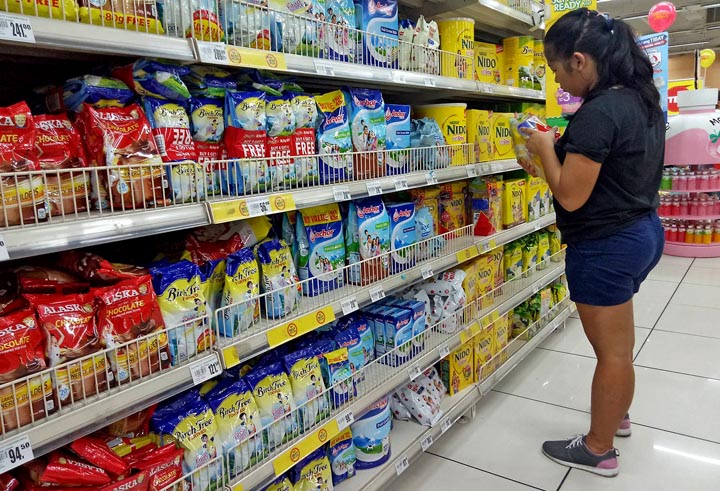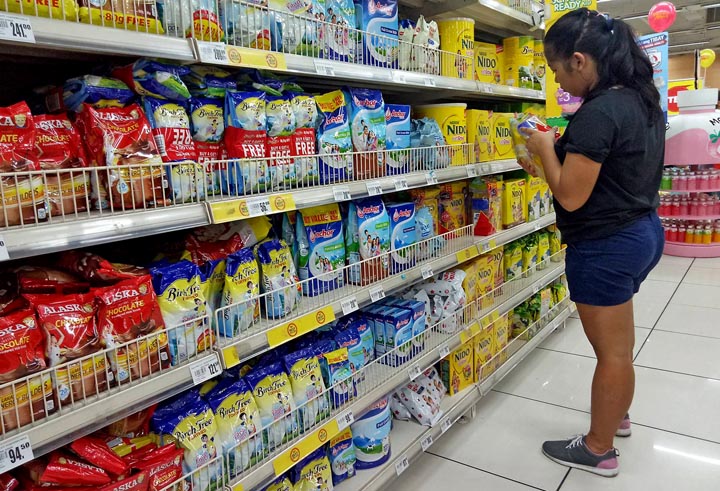
The country’s total dairy imports this year may decline slightly to 2.9 million metric tons (MMT) in liquid milk equivalent (MMT-LME) due to lower domestic demand caused by various Covid-19 related quarantines and movement restrictions, according to an international agency.
The United States Department of Agriculture-Foreign Agricultural Service (USDA-FAS) in Manila projected that the country’s dairy imports may decline by 1 percent from last year’s 2.936 MMT-LME.
“Post sees total dairy imports in 2021 declining by 1 percent to 2.9 MMT-LME due to the slowdown in demand following the various quarantines and movement restrictions,” the USDA-FAS Manila said in its Global Agricultural Information Network (Gain) report published recently.
“Post forecasts overall dairy imports to slightly recover in 2022, growing 2 percent as the economy reopens, most of the population becomes vaccinated, and Covid-19 restrictions are lifted,” it added.
Latest National Dairy Authority (NDA) data showed that the value of dairy imports grew by 8.92 percent to $562.43 million from $516.36 million recorded in the first half of last year.
“While overall dairy imports by volume are projected to decline in 2021, post sees a slight increase in imported value due to rising prices of dairy products, especially for milk powder, cheese, and liquid ready-to-drink [RTD] milk,” the USDA-FAS Manila said.
“The average import cost of dairy products in the first half of 2021 was $0.38/li [liter] in LME. High value products were curd, liquid [RTD] milk, and cheese. NDA data showed an increase in the average unit cost of imported milk and dairy products in 2021, especially milk powder,” it added.
The USDA-FAS Manila pointed out that dairy products remain as the third-largest agricultural export of the United States to the Philippines after soybean meal and wheat.
“According to NDA data, the United States was the Philippines’s top source of dairy imports in 2020, accounting for 38 percent of total volume in LME, followed by New Zealand. This is despite US exports facing a tariff disadvantage compared to New Zealand,” it explained.
The USDA-FAS Manila also projected that Philippine milk output this year may decline by 2 percent year-on-year to 26,000 MT due to a “reduction of the dairy herd following the slaughter and retiring of older animals.”
“In 2022, production is forecast to rebound 3 percent to 26,800 MT, boosted by more dairy animals and the active implementation of the Philippine government’s dairy development projects geared towards increasing milk production,” it said.
“These projects will also contribute to improvements in milk yield among dairy cattle,” it added.
Despite the noted improvement in domestic milk production, local output supplies only 1 percent of the country’s annual dairy requirement with the rest being imported, according to the USDA-FAS Manila report.
“Production growth has been slow in previous years because of the inability to increase the dairy herd, mostly due to insufficient funding and little investment from the private sector,” it said.
“Concerns with competitiveness and profitability also constrain further growth,” it added.
The USDA-FAS Manila noted that local milk production is primarily sourced from cattle (64 percent) followed by buffalo or carabao (31 percent) and goat (5 percent).
The USDA-FAS Manila added that the country’s dairy goat herd in the country is growing due to larger imports, while dairy cattle herd declined due to refreshing of old animals and slaughter of cows for meat.
The USDA-FAS Manila said the Philippine average milk output is 10 li per day for dairy cows, 4.5 li/day for buffalo and 1.5 li/day for goats.
“Production remains low mainly due to poor feeding and management practices as a result of high production costs and a lack of adequate dairy infrastructure. In comparison, the average daily milk yield in the United States is around 30 li/day,” it added.

